#late Georgian fashion
Text
Hello all, and welcome to Project Regency Gentleman!
This is a project that I've wanted to do for at least ten years. Historical fashion has always fascinated me, and I'm very excited to begin this project.
I'm currently planning a variety of items both accurate and fantastical, but to start I'm making a Napoleonic era Royal Navy Captain's undress coat for the accurate and a Royal Aerial Corps (from Naomi Novik's Temeraire series) Captain's undress coat for the fantastical, as well as the requisite shirts, waistcoats, and breeches/pantaloons/trousers.
This first round is not going to be period-accurate materials, and most things will be machine-sewn because I do not hate myself, but I hope to be as accurate as a total amateur could be in terms of fashions!
#historical fashion#regency fashion#napoleonic era fashion#historical recreation#19th century fashion#late georgian fashion#pride and prejudice#master and commander#hornblower
17 notes
·
View notes
Text
Hey friends!
When I start Project Regency Gentleman, should I dedicate a blog/twitter/instagram/*shudder* tiktok to the process? Is that something people would be interested in, or should I just leave it on this blog?
I'm planning to make relatively detailed posts about the step by step process of making the clothes, including making muslins of things to check fit
#historical fashion#regency#age of sail#napoleonic wars#georgian era#regency era fashion#late georgian fashion#19th century#early 19th century#19th century fashion#early 19th century fashion#project regency gentleman#thiefbird sews
11 notes
·
View notes
Photo

1790s Woman (Miss Frances Winnicobe?) by John Opie (Hermitage). From tumblr.com/artthatgivesmefeelings/690087093119188992/john-opie-cornish-1761-1807-portrait-of-a; fixed cracks, flaws, & spots w Pshop 1561X1999.
#1790s fashion#Directoire fashion#late Georgian fashion#curly hair#hair band#V neckline#Empire waistline#waist band#close skirt
99 notes
·
View notes
Text
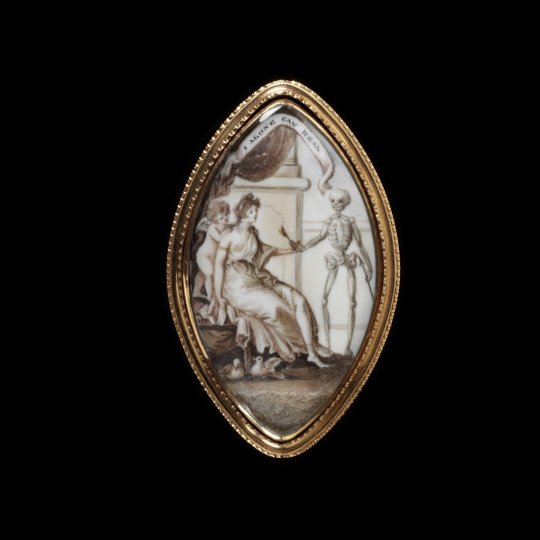
Memorial locket, late 18th Century
From the Victoria and Albert Museum
21 notes
·
View notes
Text

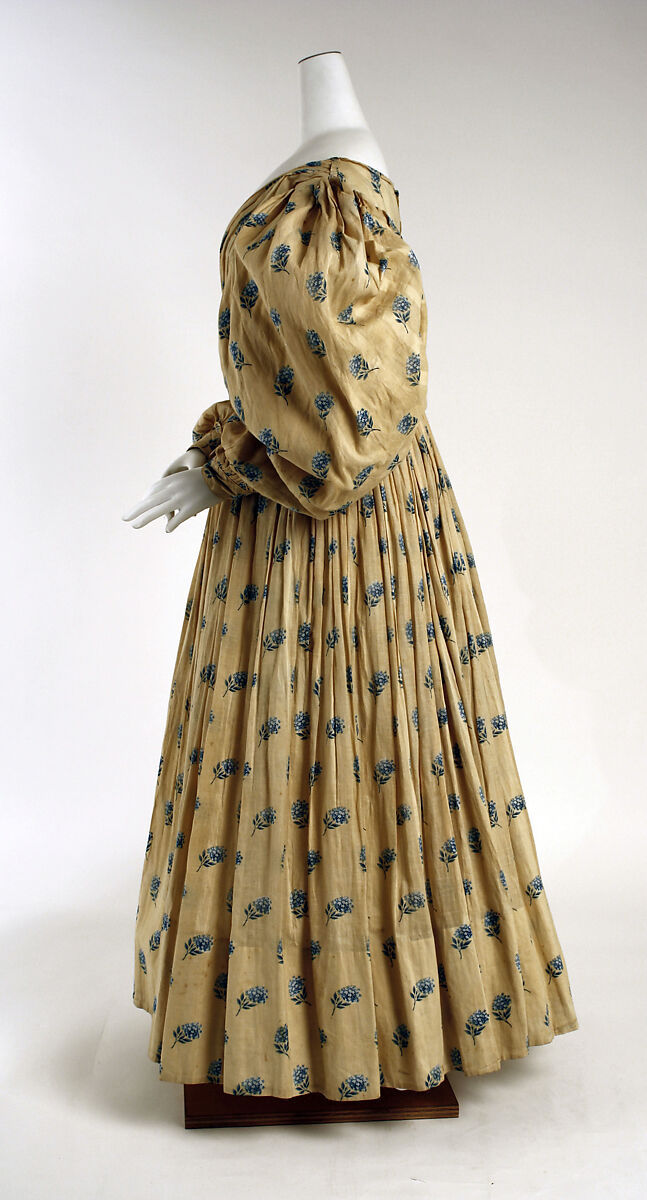
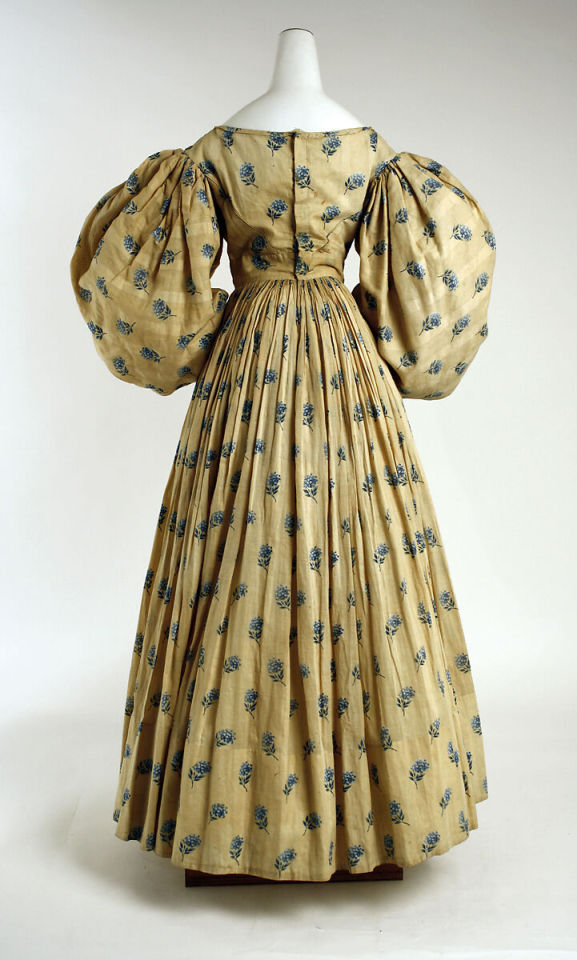


Linen dress, British, 1829 (via The Metropolitan Museum of Art)
#so obsessed with late georgian fashion right now and this one is STUNNING#historical fashion#historical dress#georgian era#georgian fashion#1820s#textile history
115 notes
·
View notes
Text
tried watching the new queen charlotte series but was immediately put off by the ridiculous anti-corset propaganda, so get ready for another rant.
first of all, this is the georgian era so what she's wearing are called /stays/ - corsets are a victorian invention. why do we still not know this in 2023 when period productions have remained consistently popular throughout the years? the concept of tighlacing (the goal being a reduction of the waist) is also victorian and was not the norm at all and v much an extreme practice. this understanding of history is so superficial, it's as if an alien were to open up People magazine and conclude that all human women resort to butt injections and lip fillers to stay with the fashion of the times. also, no, you cannot tighlace in stays to obtain a waist reduction because they are shaped like a funnel (picture 1 = long stays, 2 = short regency stays, 3 = corset)
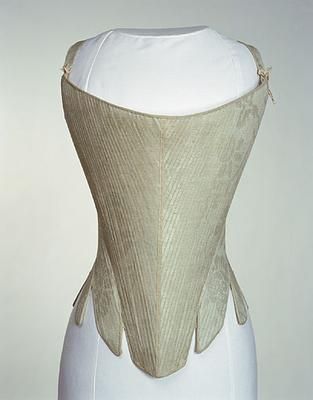

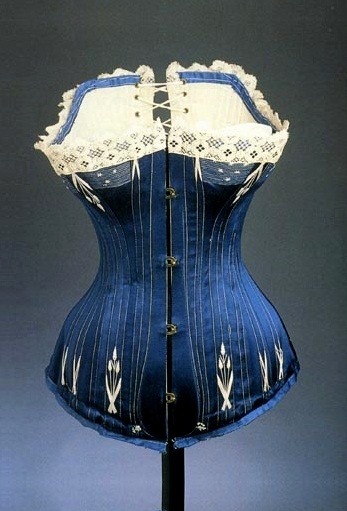
charlotte goes on to complain about how dangerous whalebone is and that it might kill her if she makes the wrong move. what the actual fuck? whalebone was actually the very best material to use for this because it was sturdy yet flexible and allowed the /stays/ to completely and comfortably mold around a woman's unique body shape. one of the reasons why today it is v difficult to replicate the same effect in corsetry is because we do not have access to whalebone (killing whales is not cool for obvious reasons) so corset-makers have to resort to other materials like plastic or metal, which CAN break. whereas whalebone doesn't really break as easily. furthermore, stays/corsets were NEVER worn on bare skin, but with a chemise/shift underneath.
why did women in the past resort to this type of undergarment, you ask? well, apart from the fact that women need bust support, the stays also serve the purpose of allowing all the many skirts and petticoats to be placed comfortably onto the waist. you try piling on that much fabric around your bare waist and see how you like it and if you can even carry it all around without it cutting into your stomach.
clothes throughout human history did cater to the popular fashions of the time, yes, but they also reflected the technological limitations and there was thus a practical aspect to it. this is a time before elastic bands, before industrialization and fast fashion, clothes are v difficult to make, everything is done by hand, so a lot of care is put into preserving them, because they are /expensive/ and labour intensive. you don't want your fancy outergarments to get ruined so you wear a lot of undergarments to absorb your bodily fluids since those are easier to make and don't have to look "pretty", can be stained and patchy etc. again, why do you need so many layers in the first place? because this is a time before comfortable heating, with poorly isolated and drafty houses, and it's bloody cold otherwise.
the third reason why that monologue was so dumb is because CHARLOTTE is the reason regency court dress was so preposterous. long story short, in a few decades, the fashionable silhouette changes wildly from the late 1700s to the 1810s.
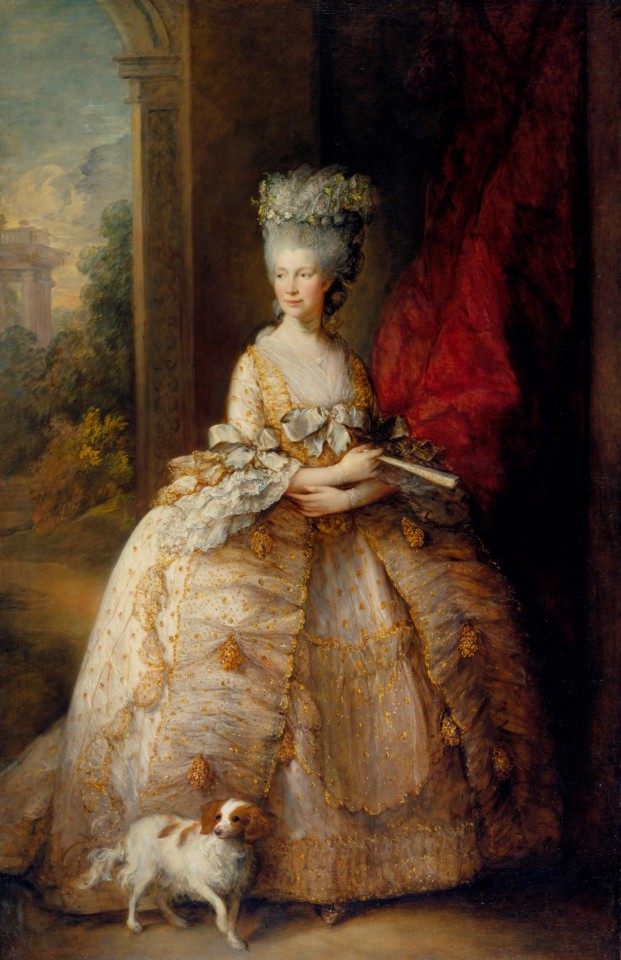
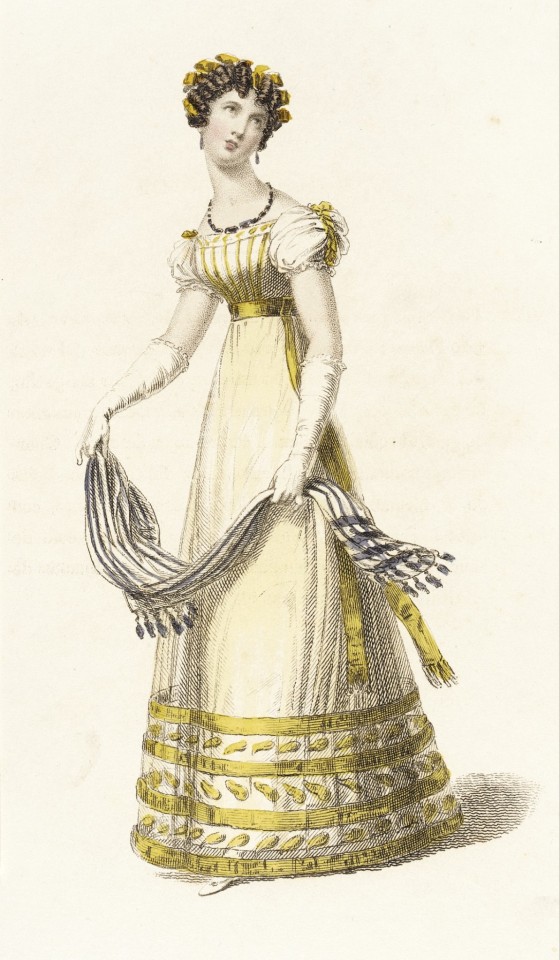
the regency waistline was much higher and the gowns were much more flowy and unstructured than the late georgian ones (what's commonly known as the empire waistline). the long stays of the late 1700s were now replaced with short stays that really were similar to modern bras. the scene in the first season of bridgerton where they squeeze penelope's sister into what looks like a pair of long stays (?) is bonkers bc no one would wear a waist-constricting boned undergarment under a regency dress. why would they? the natural waist is not even emphasized in any way. this is just another reason to peddle the women-were-oppressed-by-their-lingerie agenda. so if charlotte really hated long stays that much, regency would really have been her time to shine, right? wrong. the woman loved the fashions of her youth so much she forced everyone who came to court to still comply to them, which is why we get the absolutely atrocious regency court dresses - essentially a combination of the georgian style with side panniers, but with an empire waistline.

yeah, this is how daphne SHOULD have looked like when she was presented at court in front of charlotte. i can understand why the showrunners decided to just leave her in a regency silhouette because this is ugly af. but, anyway, queen charlotte is the last person on earth to be complaining about how uncomfortable stays are.
creative licence aside, the reason this pisses me off is because it is SUCH lazy storytelling. the show wants us to know charlotte is a spunky pseudo-feminist character so the easiest way to do that is to have her complain about the evil 'corset' trying to kill her. it is so profoundly ahistorical and does nothing to contribute to the conversation about women's true problems and true limitations during that time. instead of genuinely exploring social history and women's actual lived experiences, we are STILL, in the year of our lord 2023, diverting the discourse towards fabricated issues that never existed in the first place.
the reasons actresses complain about boned underwear in interviews are manifold. costume designers are very overworked, they have to produce clothes for hundreds of people in a very short time, so they simply do not have the time or resources to construct corsets/stays that fit the actresses like they are supposed to. in the past, these garments were made individually for every person and completely to their own requirements. they also make these actresses wear the boning on BARE skin to look extra sexy to the audience or to emphasize their oppression - that never happened, a shift was always worn underneath (hello dakota fanning scene in the alienist??).
moreover, they lace them up until they constrict their ribcages - these women are already super thin and their bodies cannot support more reduction - instead of relying on the historical practices of padding and illusion. nowadays, body parts are what's fashionable - that's why so many resort to fat transfers or breast implants or starving themselves to achieve a flat stomach. in the past, anyone of any size could have accomplished the fashionable silhouette because they had a wide array of accouterments to plop underneath their garments - panniers, bustles, hoop skirts, padding of any sort. it didn't matter how big your waist was, you just padded other areas until you achieved the desired shape. fat women wore corsets/stays, too. working women, who did a lot of physical labour, did the same. how were they able to perform all of their tasks if they were incapable of moving or breathing? even today, people wear medical corsets all the time.
TLDR the media's obsession with portraying modern women as so liberated because they wear bras instead of "patriarchal" underwear is so tedious.
EDIT: Some very basic chronological tadpoles to make this easier to place within historical context. "Georgian" is used to denote the 18th+ century when Great Britain was ruled by several kings named George, so roughly 1714-1830. Within this interval, we refer to the Regency period as encompassing the regency of Prince George, future King George IV, when his father George III was incapacitated by mental illness. The official political regency took place during 1811-1820, but culturally speaking, this was extended to roughly the end of the 18th century up to maybe 1830 or 1837. This is the time period of Napoleonic wars and Jane Austen novels, so all her heroines should normally wear Regency styles. Think "empire waistline" as in Imperial France and Napoleon. The Victorian era (and its corsets) follows throughout the rest of the 19th century. Queen Charlotte was a contemporary of Marie Antoinette's, so they should be dressed in similar fashions (robe à la française vs robe à la anglais).
#but what can i expect from a production by shonda rhimes 🤷♀️ she certainly has a marvel-heroine type understanding of feminism#queen charlotte: a bridgerton story#bridgerton#fashion history#anyway this post is relevant for my blog bc i generally watch a lot of period media so this issue inevitably pops up now and again#would also like to add that while the term 'corset' did exist in that era#it referred to a v wide array of chest undergarments#so as to become impractical to use for a relatively short explanation#corsets as we conceptualize them today are tied with the victorian period#also pls remember i am simplifying for the sake of brevity else this post would have been enourmous
533 notes
·
View notes
Text
Regency Era Accessories Part 2:
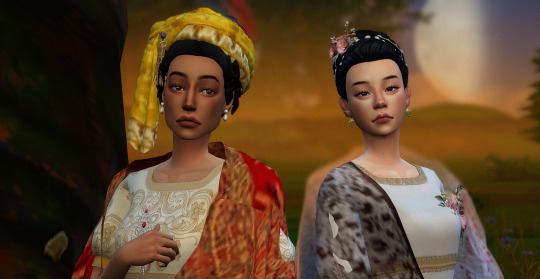
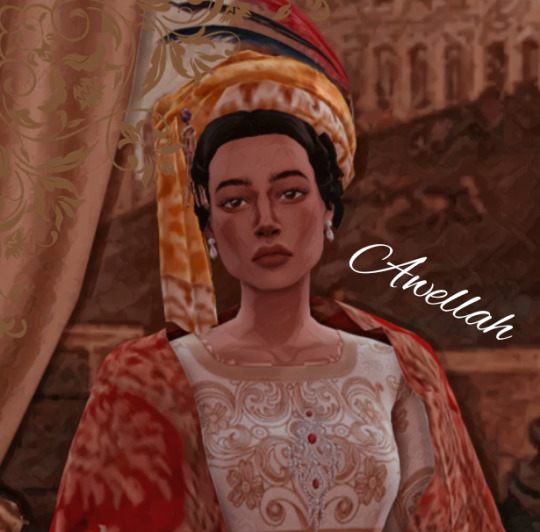
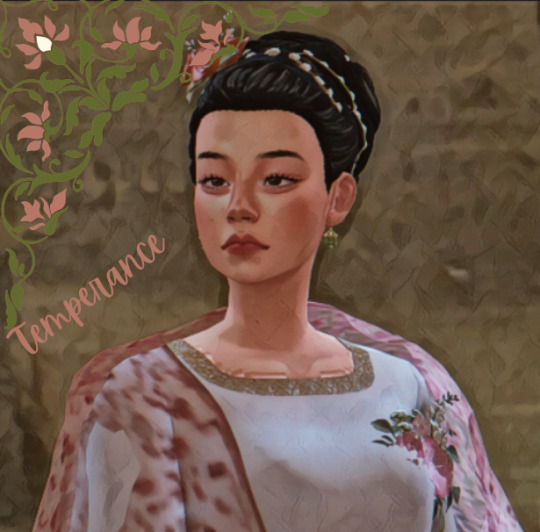
I've converted this turban from Sims 2 creator maya40, when downloading please read the description.
I've recolored a shawl accessory by Sherazade that they've converted from a Sims 3 creator deltasim
Awellah: Includes a Turban and Shawl. This turban will fit the late Georgian era (1780s+ when Turkish Influence was prominent in the West), and Regency Era (1795-1837). The Shawls can fit any era I suppose, but the recolors of the Awellah Shawl are in paisley prints which were in fashion during the Regency era.
Temperance: Includes a Sheer Translucent version of the Awellah Shawl
BGC and Hat Slider Compatible
Below I've included some pictures of shawls and turbans during both the Georgian and Regency Eras.
Previous Accessories
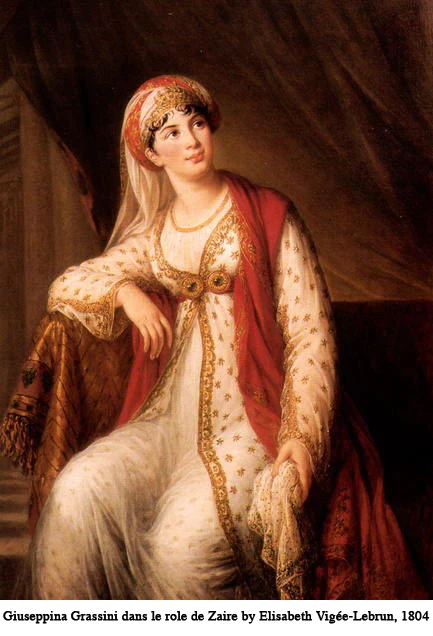


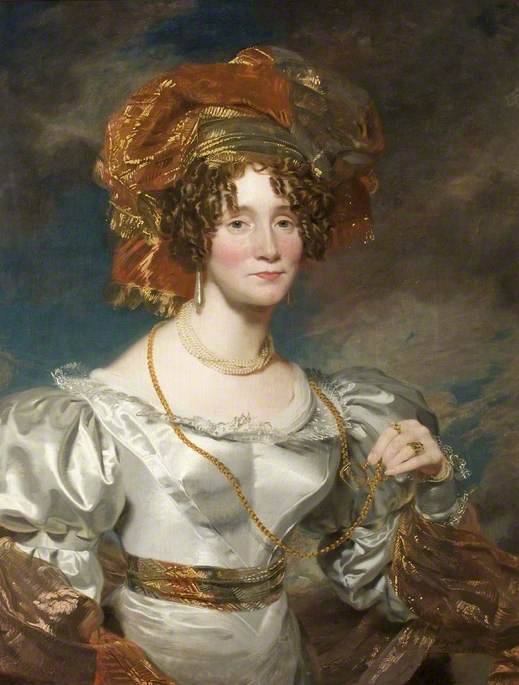
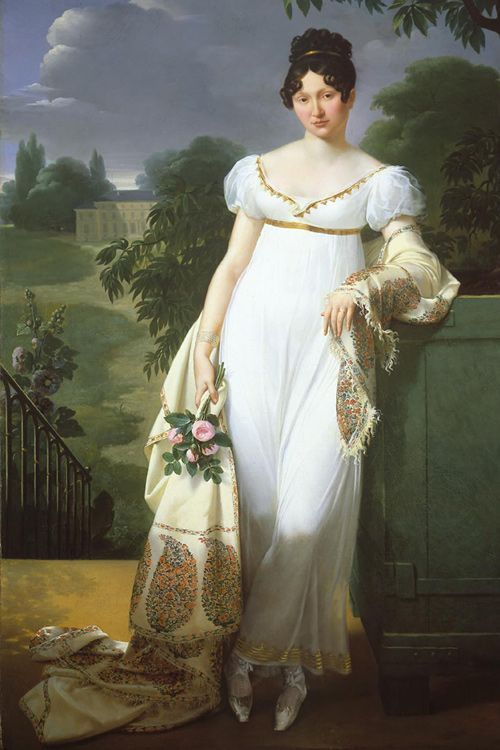
DOWNLOAD
#ts4 regency#sims 4 regency#regency sims 4#simblr#sims 4 historical#sims 4 regency era#sims 4 georgian cc#regency era#rococo sims 4#sims 4 rococo#georgian ts4#rococo ts4#historical sims#sims 4 turban#sims 4 shawl#regency ts4#19th century#my cc#historical cc
192 notes
·
View notes
Text
Why the "Regency Era" is a fantasy realm
I've seen some interesting discussions back and forth about making historical fiction and particularly historical romance more inclusive, and I do think that there's some merit to the argument that merely inserting BIPOC as part of the ruling class erases many of the historic struggles people went through in terms of both class and race.
However, there's something that people don't seem to realize when it comes to the Regency Era: it's a fantasy realm that was primarily created by a single author.
Just as J.R.R. Tolkien published his Lord of the Rings books and created a world that would loom over the fantasy genre for decades to come, Georgette Heyer created the Regency Era in a way that I think people looking at the romance genre from the outside don't really understand.
Heyer wrote several historical romances and mystery novels prior to 1935, but it was with Regency Buck that she introduced her version of the Regency Era, a version that has actually been far more influential in popular culture than that of Jane Austen. (Most of the Austen adaptations pull more from Heyer than people realize, especially in terms of manners.) Heyer's world is all polite society heroes with a stiff upper lip and perhaps a tinge of rakishness, spirited yet virginal heroines, and a cast of supporting characters that range from younger brothers to elderly aunts.
There are very few hints that anyone outside the aristocracy is of any consequence, or even knows how to behave themselves, even when the middle-class daughter of a rich "Cit" marries an impoverished aristocrat in A Civil Contract. Sex exists, but only behind firmly closed doors and, for the heroines, only after marriage.
And what about the minorities that we know lived in Great Britain during the Regency Era? Not just the racial minorities that included Black citizens and former slaves as well as Indian immigrants, but also religious minorities? They pretty much don't exist in Heyer's world, apart from a few anti-Semitic stereotypes of rapacious Jewish moneylenders that make modern readers cringe when they stumble across an unbowdlerized edition. There are a few jokes and whispers about "unmanly" men, but that's about it for LGBTQIA+ representation as well.
Given what we now know about the Regency Era -- and we know a lot more than Heyer did when she was writing almost a hundred years ago -- we know that her view of Regency society was as artificial as Tolkien's world. Despite her use of historical sources, her romance novels are set in a fantasy world that melds the fashions and historical events of the Regency with the Victorian morals and mores that Heyer herself was raised with. The Regency Era was the late Georgian Era and was far more vulgar and free-wheeling than Heyer was willing to admit. She left out the people who didn't fit into her vision of the Regency, which showed an Anglo-Saxon ruling class that deserved to rule because of their natural superiority.
So my opinion about TV shows and films like Bridgerton and Mr. Malcolm's List that show an inclusive aristocracy in the Regency Era is ... well, it's all fantasy anyway, isn't it? Why not make the fantasy inclusive since the whole era is Heyer's illusion dressed up with a few historical details?
And if you want to try and argue that Heyer was historically accurate about everything, be prepared: I have sources that Heyer either ignored or did not have available to her. Look up Benjamin Silliman's 1803 journal of his trip to Great Britain sometime.
#mr malcolm’s list#historical romance#regency romance#historical romantic fiction#romance genre#diverse romance#bridgerton#georgette heyer
1K notes
·
View notes
Text
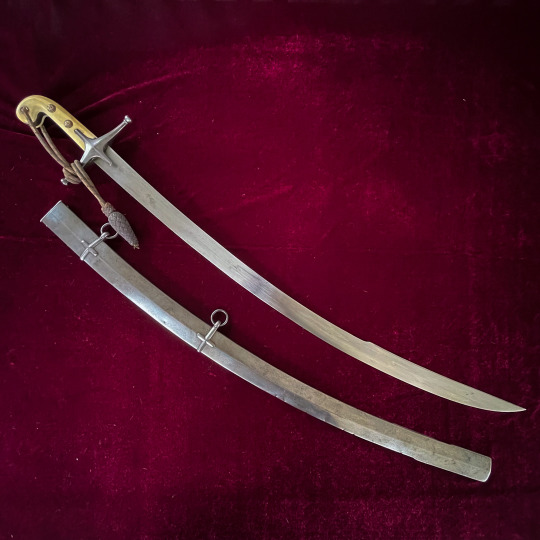

Late Georgian era British Lancers or Dragoon officers dress Mameluke sabre.
While they are called 'Mameluke' sabres by collectors, they are in truth a Europeanised interpretation of the shamshir or kilij sabres that the actual Mameluke warriors used. The 'Mameluke' sabre had become fashionable with many British (and French) officers following Napoleon's Egyptian campaign and were carried by many notable officers on both sides of the conflict, including the Duke of Wellington.
However, it was only in 1822 that the British army first officially recognised the 'Mameluke' as a regulation pattern for the newly formed lancer regiments.
In 1831 with the Pattern sword for General Officers, which remains the current dress sword for Generals in the British and many Commonwealth Armies to this day.
Mameluke sabres can also be found with links to other light cavalry and some heavy cavalry regiments, plus they were carried as bandsman's swords.


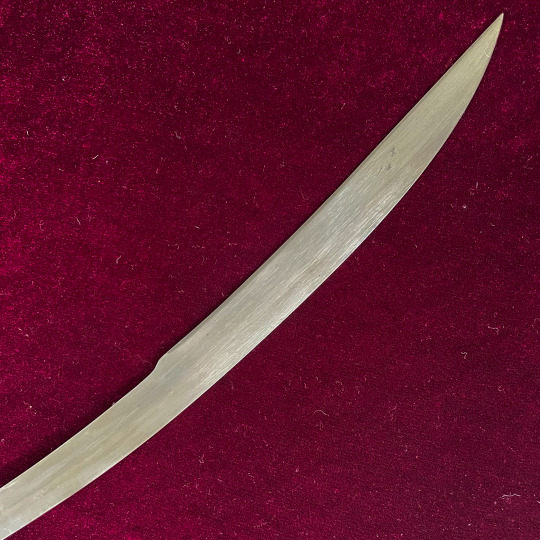
#sword#Sabre#Mameluke#Light Cavalry#Napoleonic Wars#Antiques#Antique Weapons#Military history#British Army#Lancers#Georgian Era#19th Century
102 notes
·
View notes
Note
Your post about the Victorians’ attitudes towards the Regency is so interesting!! Do we have any examples of them satirizing or otherwise lambasting the attire of other eras? My teacher once said they hated the Georgians but I’ve also read that was a big 1870s influence so unsure if that’s right.
I think this is where it helps to remember that the Victorian EraTM was a 60-year span of time, and the Georgian era similarly expansive. Parts of it were in and out of favor during parts of the former, so it's not quite correct to say "the Victorians hated the Georgians."
(Also, for fellow non-Brits who were confused by the Georgian/Regency distinction like I first was: the Regency was part of the Georgian era. So were most of the 1820s and 1830s. Georgian does not just refer to the panniers/powdered wigs period. The more you know!)
There was a massive late 17th/early-mid 18th-century influence on fashion in the 1870s and 80s, yes! It's why I get annoyed when people claim that bustles are based on the- very real -exploitation and fetishization of Sarah Baartman (c. 1789-1815). They became popular nearly 60 years after her death, and took inspiration from clothing that went out of style decades before she was born.

(La Comtesse de Mailly, 1698)
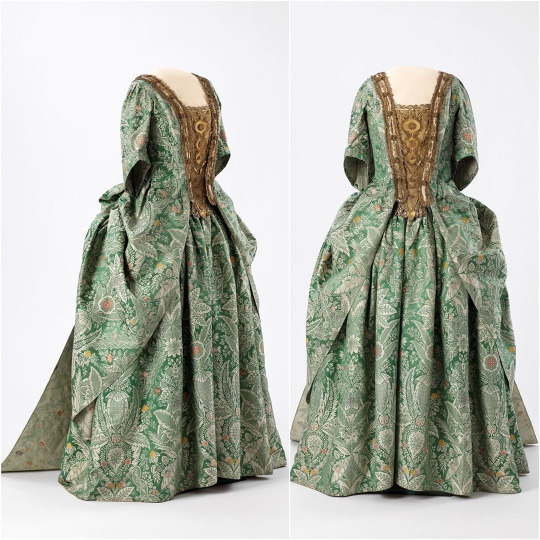
(1720s dress, National Museum, Norway.)
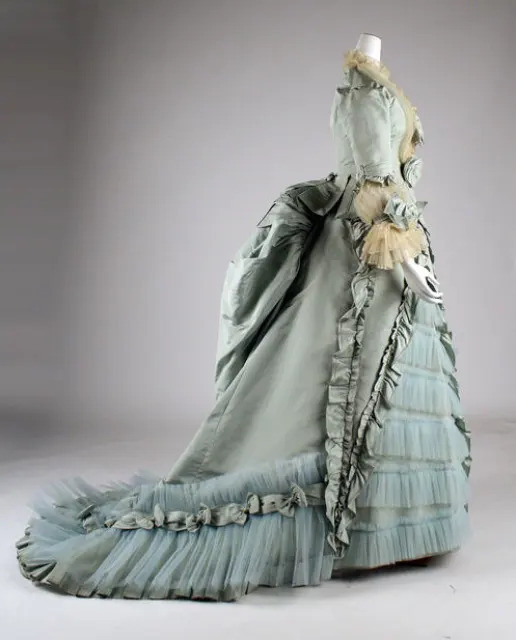
(Gown from the Met Museum's collection, c. 1872. Note the ruffled 3/4 sleeves, skirt back fullness, and appearance of an underskirt/overskirt arrangement. Low-ish, square necklines were also popular at the time, though not universal.)
As for satirizing other eras of fashion, I'm sure it happened in abundance; what interests me more, however, is the spreading of outright misinformation about how their ancestors dressed. One of the best-known examples is their take on the "iron corset" of the Medieval and Renaissance periods:

(Illustration from The Corset and the Crinoline, published 1868. One 1871 writer from the London Times dismissed the notion that such garments were orthopedic devices as "superficial falsehood," despite the fact that we now know- and clearly at least some people did back then, too! -that primary sources identify them exactly that way.)
While real examples of iron support garments do exist- as do extant accounts identifying them as medical aids -a roaring reproduction trade sprung up during the Victorian era. At least partially for fetish reasons, it is now believed, echoing the anonymous tightlacing erotica found in such publications as the misleadingly-named Englishwoman's Domestic Magazine.
And that's just one example. The more things change, the more we remain convinced that our ancestors were complete idiots who had no idea how to dress themselves sensibly.
#ask#anon#marzi rambles#long post#dress history#victorian#georgian#history misconceptions#fashion history
82 notes
·
View notes
Text
Hermitcraft this season is SO late Georgian era / the industrial revolution coded.....
Steampunk? A mix of engine and horses? And while different mail systems existed for centuries, PET'S system definitely fits the time period's (at least in Europe)
Anyways, I'm so into it and I really want to draw them in fitting fashion
Edit: HOW DID I FORGET TO MENTION SCAR'S TRAIN
#it's one of my favourite periods in terms of aesthetic#you know how some people are insane about medieval vibes? yeah I'm like that with the 19th and 20th centuries#hermitcraft#hc 10
31 notes
·
View notes
Note
How do I keep my 18th century man from trying to explore the high arctic? I've tried to distract him but it hasn't worked :( I feel worried about the risks
I assume this is a typo and you meant to say 19th century man? I still know a thing or two about late 18th century Georgians and early 20th century Edwardians because long nineteenth century and all that, but 19th century men are my main hobbyist interest.
That said, Lord Nelson fighting a polar bear (which allegedly took place in 1773 when he was a midshipman) in this 1806 painting by Richard Westall has caused so many problems!

You would think an early 19th century man would be unaffected by the siren song of the Discovery Service with the Napoleonic Wars still raging, but no! They really had Captain Philip Broke of HMS Shannon—yes, that Captain Broke—up in the arctic in 1807 chasing French warships that were harrassing British whalers, and also making new charts of the area with inadequate surveying equipment. (It's true, read "In Arctic Waters" by Michael Barritt in Broke of the Shannon and the War of 1812 ed. Tim Voelcker.)
Not even literature is safe—there are all those dramatic passages about the arctic in Frankenstein by Mary Shelley, and before you know it your 19th century man thinks the polar wilderness is the embodiment of the sublime!
If he's a mid 19th century man, there's the added pressure of seeking employment in a bleak economic climate, and he might see an arctic voyage as a sure path to career advancement no matter how many times you tell him John Ross was lucky to be rescued and no his officers were probably not wearing elegant coats and black stocks like that; sometimes explorer narratives embellish the truth.

Some diversions to take his mind off the high arctic include:
Take a course at the Royal Naval College! He's probably some kind of math nerd if your man thinks he's cut out for the Discovery Service.
A tour to improve his draughtsmanship—get him into nature with the excuse that he's developing his artistic skills to draw flora and fauna on an expedition.
A good old-fashioned vacation. He could just need a break from constantly being assigned to a ship and/or processing his experiences from one or more foreign wars.
Sometimes you can successfully redirect his polar passion into something like hydrographic surveying and cartography. Reassure him that it's just as imperialist, but with less scurvy and cannibalism. Any voyage, even if it's not very long, is going to give him the homosocial bonding he probably craves.
212 notes
·
View notes
Text

Louise d’Esparbès de Lussan by Alexandre Kucharski (location ?). She was a lady in waiting to Marie Antoinette. From tumblr.com-catherinedefrance; fixed spots & flaws w Pshop 2643X3315. This could be from the 80s or 90s.
#late Georgian fashion#Rococo fashion#Louise d’Esparbès de Lussan#Alexandre Kucharski#cap#fichu#waist band
25 notes
·
View notes
Text

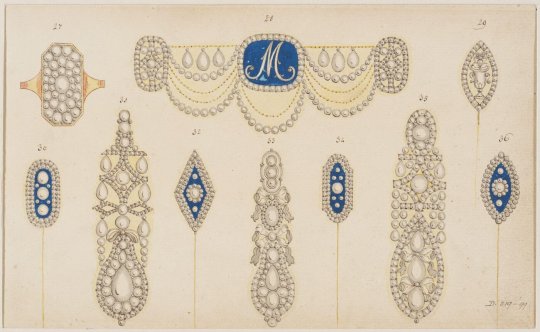
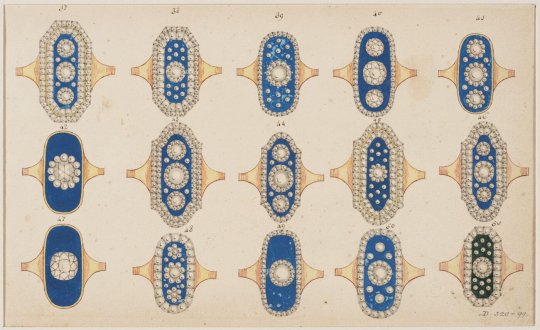
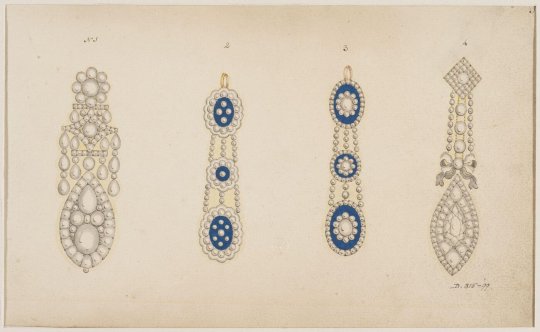
Jewellery designs by an unknown artist, late 18th Century
From the Victoria and Albert Museum
13 notes
·
View notes
Photo

John Hancock
John Hancock (1737-1793) was a merchant, politician, and Founding Father of the United States, who helped lead the Patriot movement during the American Revolution (1765-1789). He served as president of the Second Continental Congress from 1775-1777, and as Governor of Massachusetts from 1780-1785 and again from 1787-1793. He is best remembered for his flamboyant signature on the Declaration of Independence.
Early Life
John Hancock was born on 23 January 1737 in Braintree, Massachusetts (modern-day Quincy). He was the second of three children born to Reverend John Hancock and Mary Hawke Hancock; he had an elder sister, Mary (b. 1735) and a younger brother, Ebenezer (b. 1741). John Hancock's childhood was a solitary one. His father was often preoccupied with the spiritual needs of the community while his mother preferred doting on his elder sister, leaving John to his own devices. He took to following around the older boys of Braintree, which included John Adams and Samuel Quincy; although the older lads tolerated Hancock's presence, they did not like the younger boy, whom Adams later described as possessing "a peevishness that sometimes disgusted and afflicted his friends" (Unger, 15).
In 1744, Reverend Hancock died after a brief illness at the age of 41. Faced with the impending horrors of poverty, Mary Hawke Hancock appealed to her late husband's brother, Thomas, for help. From humble beginnings as a bookseller's apprentice, Thomas Hancock had become one of the most successful merchants in Boston, having founded a world-famous firm called the House of Hancock. There was, however, a small problem threatening Thomas' commercial empire: he had no heir. He and his wife Lydia had been unable to have children. So, when his brother's widow reached out for help, Thomas decided to cut a deal. He agreed to financially support Mary and her children, on the condition that John be sent to live with him in Boston, to be groomed to one day inherit the Hancock family business.
Mary agreed, and John was sent to live in his uncle's lavish house atop Beacon Hill. The Hancock home was a three-story, Georgian-style mansion, made of square-cut granite blocks, with a superb view of Boston Harbor. The reverend's son would have marveled at the delicately imported mahogany furniture, beautiful oil paintings, and apricot trees imported from Spain. He was carefully tutored to fit the part of an elegant Boston gentleman, was taught etiquette and introduced to members of Boston's high society. He was dressed by his doting aunt in velvet breeches and silk coats, sparking a lifelong love affair with expensive clothing. In 1750, he was enrolled in Harvard at the age of 13, the second youngest in his class. During his college days, he regularly got into trouble; he drank frequently and, at one point, got the enslaved servant of the Harvard president dangerously drunk. Still, he managed to graduate in July 1754 (albeit without academic honors). Now 17, Hancock was tall, slender, and sophisticated, always dressed in the most fashionable clothes. It was time for him to learn the family business.
Continue reading...
16 notes
·
View notes
Text



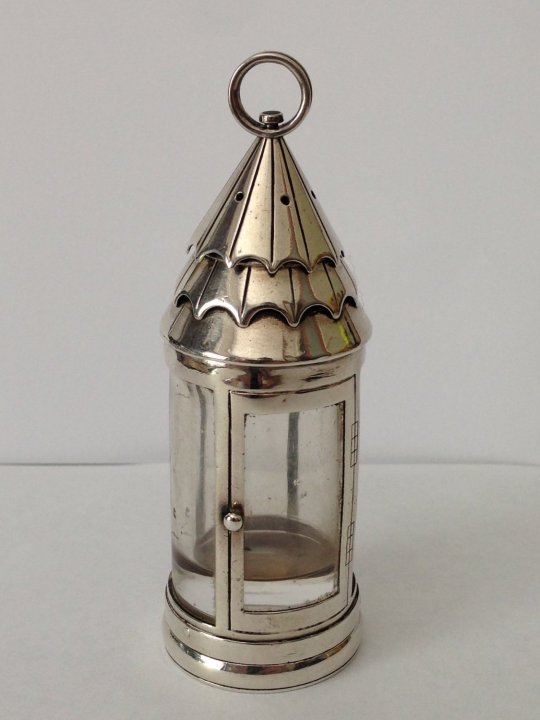
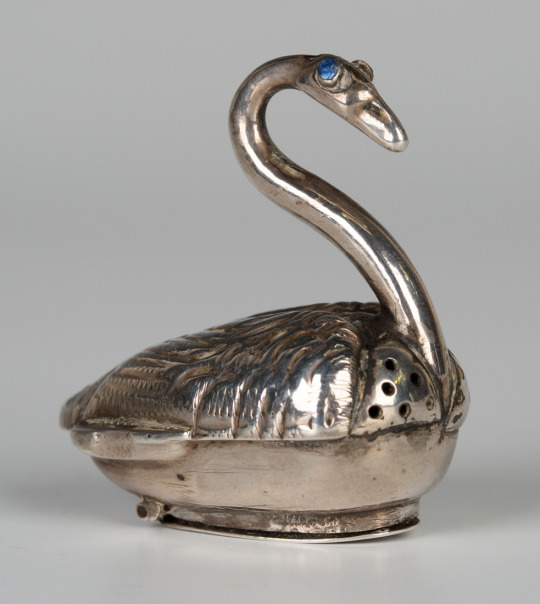

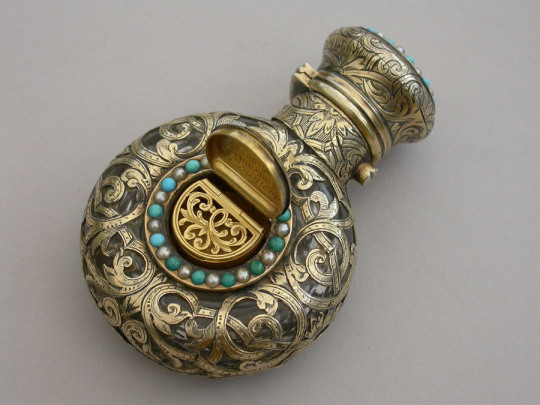



For your poison-storing needs Vinaigrettes
A trend from the late 18th and through the 19th century, vinaigrettes were small containers for smelling salts or aromatic substances dissolved in vinegar, used to cover unpleasant smells. Some were really tiny, half an inch long. They became novelty / luxury items, they were often made of silver, and came in many different shapes. They had a little sponge inside to absorb the vinegar, and sometimes a second compartment where perfume could be placed. They started going out of fashion from the 1840s.
I like the third one, that looks like a dark lantern, very roguish.
descriptions after the cut
Silver vinaigrette in the shape of a skull, Europe, 1700s
George III Silver Novelty Bag Vinaigrette, circa 1815
Victorian Novelty Silver Sewing Etui Combined With a Vinaigrette to Base, Sampson Mordan
Lafite fine silver Victorian ‘Lantern’ form novelty combination scent bottle and vinaigrette c.1870
A late 19th Century Dutch silver novelty vinaigrette in the form of a swan
Vinaigrette ring
Victorian Silver Gilt Mounted Scent Bottle / Vinaigrette ‘Turquoise & Pearl’, London 1867
A Fine Georgian Antique English Gold Book Vinaigrette, London, circa 1830
George III Antique Silver Articulated Fish Vinaigrette
Victorian Silver Mounted Green Glass Double Ended Binocular Scent Bottle circa 1870
tinyurl.com/s29jrf3s
49 notes
·
View notes